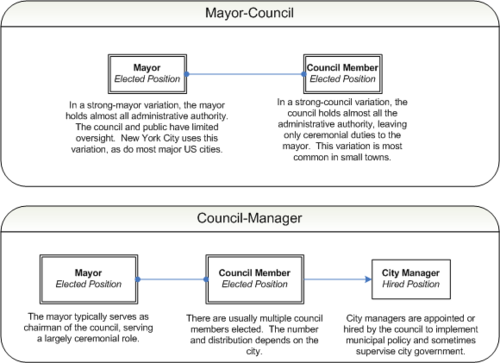Charter Communications Wikipedia the free encyclopedia
Post on: 16 Март, 2015 No Comment

Charter Communications service truck
Charter Communications is an American company offering cable television. high-speed Internet, and telephone services to more than 27.6 million customers in 29 states. [ 1 ] By revenues, it is the fourth-largest cable operator in the United States. behind Comcast. Time Warner Cable. and Cox Communications. [ 2 ] and by residential subscriber lines it is the tenth largest telephone provider. [ 3 ] In late 2012, the company announced plans to relocate its headquarters from St. Louis, Missouri. to Stamford, Connecticut. [ 4 ]
Contents
§ History [ edit ]
§ The beginning [ edit ]
Charter Communications was founded in 1993 by Barry Babcock, Jerald Kent, and Howard Wood, who had been former executives at Cencom Cable Television in St. Louis, Missouri. It was also incorporated in St. Louis, Missouri, in 1993. [ 6 ]
In 1995, Charter paid about $300 million for a controlling interest in Crown Media and acquired Cable South. [ 6 ]
In 1997, Charter and EarthLink joined forces to deliver high-speed Internet access through cable modems to Charter’s customers in California. [ 6 ]
In 1998, Paul Allen bought a controlling interest. The company paid $2.8 billion to acquire Dallas-based cable company Marcus Cable. Charter Communications had 1 million customers in 1998. [ 6 ]
§ Listing on the NASDAQ for the first time [ edit ]
In November 1999, the company went public, trading on the NASDAQ stock exchange. [ 7 ] At the time, it had 3.9 million customers.
Charter completed more than ten major acquisitions in 1999: [ 6 ]
- Added 68,000 subscribers in Southern California with the purchase of four cable systems from American Cable Entertainment of Stamford, Connecticut.
- Acquired 400,000 InterMedia Partners subscribers, primarily in the Southeast. As part of the deal Charter would turn over about 140,000 of its subscribers to TCI in cable system swap.
- Merged with Marcus Cable
- Acquired cable systems serving 460,000 subscribers from Rifkin Acquisition Partners and InterLink Communications.
- Acquired 173,000 subscribers, mostly in central Massachusetts, from New Jersey–based Greater Media Inc.
- Acquired Renaissance Media Group, a New York partnership serving 130,000 customers near New Orleans. western Mississippi, and Jackson, Tennessee .
- Acquired New Jersey-based Helicon Cable Communications. The systems served about 171,000 customers in eight states in the Southeast and Northeast.
- Acquired Avalon Cable TV, adding 260,000 subscribers primarily in Michigan and Massachusetts .
- Acquired Vista Broadband Communications in Smyrna. Georgia, adding 30,000 more customers.
- Acquired Falcon Cable TV of Los Angeles. Falcon was the eighth largest cable operator in the United States with about one million subscribers in 27 states in primarily non-urban areas.
- Acquired Fanch Communications Inc. of Denver. Fanch had 547,000 subscribers in West Virginia. Pennsylvania. Michigan. Indiana. Kentucky. Louisiana. and Wisconsin .
Charter also began swapping customers with other systems to improve the geographic clustering of its systems. In December 1999 it signed a letter of intent with AT&T Corporation to swap 1.3 million cable subscribers in St. Louis as well as in Alabama. Georgia. and Missouri. In 2000, Charter Communications bought select AT&T cable markets, including Reno, Nevada. and the City of St. Louis. [ 8 ]
In 2001, MSN and Charter signed an agreement to offer MSN content and services to Charter’s broadband customers. In the same year, Charter received awards, including the Outstanding Corporate Growth Award from the Association for Corporate Growth, the R.E. Ted Turner Innovator of the Year Award from the Southern Cable Telecommunications Association, [ 9 ] and the Fast 50 Award for Growth from the St. Louis Regional Chamber and Growth Association.
§ Lawsuits [ edit ]
In 2002, the United States Department of Justice investigated the company, leading to the indictment of four former executives in 2005 for improper financial reporting related primarily to the inflation of cable subscriber numbers to improve financial figures. [ 10 ]
In 2004, Charter settled a class action lawsuit concerning the questionable financial reporting associated with the US Department of Justice’s 2002 investigation and subsequent indictment of four former executives. Current and former shareholders (and their attorneys) were awarded $144 million as well as an agreement from Charter to maintain and implement proper corporate governance measures. [ 11 ]
In June 2010, Charter settled a class action lawsuit for $18 million concerning wage and overtime claims for current and former field technicians in California, Missouri, Michigan, Minnesota, Illinois, Nevada, Washington, Oregon and Nebraska. [ 12 ]
in December 2013, a complaint was filed by Steelhead Licensing LLC for Patent Infringement of US Patent 8082318. US Patent is described as Controlling service requests transmitted from a client to a server. [ 13 ] [ 14 ]
§ Further expansion [ edit ]
In 2008, it acquired the cable television franchise and service for the Cerritos and Ventura. California area from Wave Broadband .

Also in 2008, Charter stock failed to meet NASDAQ standards and was given warning to comply by October 13 or request an extension. [ 15 ]
In February 2013, Charter confirmed its purchase of the former Optimum West cable systems owned by Cablevision Systems Corp. (NYSE: CVC). The $1.6 billion deal brought Charter cable systems to 375,000 customers in Colorado’s mountains and Western Slope, as well as in Utah, Wyoming and Montana. [ 16 ]
§ Filing for bankruptcy protection [ edit ]
In February 2009, Charter Communications announced that it planned to file for Chapter 11 of the United States Bankruptcy Code on or before April 1, 2009. The action would allow Charter to pay its debt obligations, and cancel its obligations to shareholders. [ 17 ] Private equity firm Apollo Management expected to own most of Charter’s shares after the bankruptcy. [ 18 ] Charter filed for a prearranged bankruptcy on March 28, 2009. The company expected the financial restructuring to reduce its debt by $8 billion, as well as adding $3 billion of new investment, and refinancing other debt.
§ Emerging from bankruptcy protection [ edit ]
On November 30, 2009, its bankruptcy plan was approved, which extinguished its stock and cut approximately $8 billion in debt. [ 19 ] That day, Charter emerged from bankruptcy despite many of its creditors’ objections over its bankruptcy plan. [ 20 ]
In 2010, Paul Allen stepped down as chairman and from board of directors’ seat, but remains the largest single shareholder. Also in that year, Charter signed multi-year deal with Tivo to deliver content via its platform [ 21 ]
§ Listing on the NASDAQ for the second time [ edit ]
On September 14, 2010, Charter Class A common stock was re-listed on NASDAQ under the symbol CHTR. [ 22 ]
Thomas M. Rutledge was appointed as a director and President and CEO effective February 13, 2012. [ 23 ]
The same year, Charter prices $1.25 billion senior debt, offering to pay down short- and long-term debt [ 24 ]
On February 8, 2013, Charter announced an agreement to acquire former Bresnan Communications systems in Montana, Wyoming, Colorado, and Utah, from Cablevision in a transaction worth US$1.63 billion. [ 25 ]
§ Failed acquisition of Time Warner Cable [ edit ]
On January 13, 2014, Charter Communications said it was interested in buying its larger rival Time Warner Cable. After three previous attempts to buy and merge with the company, Charter CEO Thomas Rutledge wrote in an open letter to Time Warner Cable’s CEO Robert Marcus stating, I believe we have a significant opportunity to put our companies together in a way that will create maximum, long-term value for shareholders and employees of both companies. [ 26 ] The $132.50 per share offer, just above TWC’s closing price at $132.40 on January 13, was rejected. [ 27 ]
On February 13, 2014, Time Warner Cable accepted an offer of $158.82 per share from Comcast. avoiding a hostile takeover situation from Charter. [ 28 ] [ 29 ]
On April 28, 2014, Comcast and Charter announced that, assuming Comcast’s merger with Time Warner is successful, Charter will acquire 1.4 million Comcast/Time Warner Cable customers, bringing Charter’s subscriber total to 29 million and making Charter, by its own count, the second largest cable operator in the country. [ 30 ] In addition to the 1.4 million divested subscribers, Comcast also agreed to swap 1.6 million subscribers with Charter in an even, tax-efficient exchange whose intent is to improve the geographic spread of both companies. In a third part of the agreement, Comcast will spin off 2.5 million subscribers into a new publicly traded company in which Charter will hold a 33% stake — with an option to eventually own the whole company — and former Time Warner Cable shareholders will hold a 67% stake. [ 31 ]
§ Current operations [ edit ]
§ Coverage [ edit ]
In August 2008, Charter Communications announced an agreement to carry the Big Ten Network, applicable to all customers. [ 32 ]
In May 2009, Comcast was able to meet an agreement with NFL Network, in which the NFL Network agreed to lower their asking price per subscriber. The higher asking price has been a problem with being carried with other cable networks. Roger Goodell is looking at resolving differences with other cable providers, to include Charter Communications, to allow carriage of this channel. [ 33 ]
On August 2011, Charter Communications and NFL Network announced that they had reached a new long-term agreement to carry the NFL Network in time for the 2011 season. [ 34 ]
In November 2013, Charter Communications announced the re-branding of their residential services to Charter Spectrum [ 35 ] which encompass an upgrade to an all digital network for their video, voice, and broadband services. The company relied heavily on a predominantly coaxial cable -based network. The newer fiber optic service delivery system provides higher bandwidth speeds than is available with its copper wire infrastructure. [ 36 ]
In August of 2014, Charter acquired the SEC network, providing college football in the Southeastern Conference. [ 37 ]
§ Belo Corporation dispute [ edit ]
In December 2008, three television stations which were owned by Belo Corporation prior to its acquisition by Gannett in 2014 (WFAA-TV. WCNC-TV. and KMOV-TV ) reported that beginning January 1, 2009, Charter would no longer carry these stations due to a breakdown in negotiations. Charter quickly replied that a resolution to the issue was not out of the question. [ 38 ] [ 39 ] [ 40 ] The cable operator would have lost access to all of the stations owned by Belo. However, an agreement was reached days before the shutdown date. [ 41 ]
§ Call centers [ edit ]
On May 2, 2006, Charter announced it would restructure seven of its call centers in the United States in the following locations:
- St. Louis, Missouri  — Telephone Care Center, July 31, 2006; converted into a Charter Phone service call center
- Bay City, Michigan  — September 2006; converted into a Charter Dispatch center
- Birmingham, Alabama  — December 2006; converted into a Charter Dispatch center
- Fort Worth, Texas  — December 1, 2006; shuttered
- Irwindale, California  — December 2009; restructured
- Newtown, Connecticut  — March 2007; restructured
- Kingsport, Tennessee  — March 2007; converted to Dispatch Center w/ location change
- Amherst, Nova Scotia  — December 2010; third-party contract, Teletech, not renewed
- Louisville, Kentucky  — Residential HSI/Phone Support, Charter Business tech support, Network Operations Center
Orders completed online or through retail partners with Charter Communication are directed to a call center located in Tempe, Arizona. operated by Teletech (Direct Alliance). This call center has inbound/outbound sales agents, as well as online chat agents. Outsourced call centers were implemented in 2006 and are located in Canada and the Philippines.














